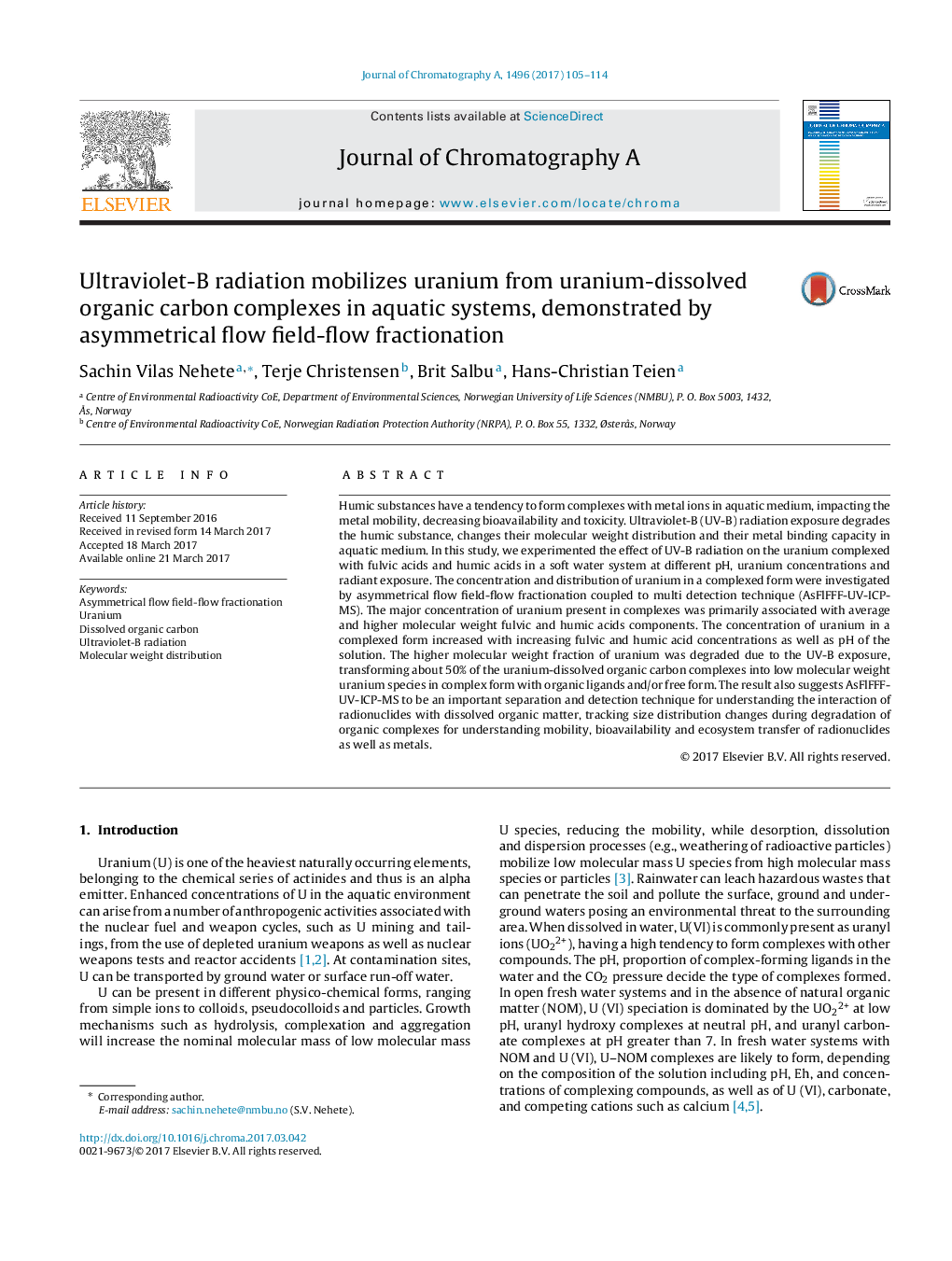| کد مقاله | کد نشریه | سال انتشار | مقاله انگلیسی | نسخه تمام متن |
|---|---|---|---|---|
| 5135268 | 1493430 | 2017 | 10 صفحه PDF | دانلود رایگان |

- Uranium absorption to FA/HA increased with concentration and pH of medium.
- AsFlFFF-UV-ICPMS was used to separate and quantify U in U-DOC complex.
- U was primarily associated with average and higher Mw FA/HA fraction.
- UVB degrades U complex, which increases dissolved uranium fraction in aqueous medium.
Humic substances have a tendency to form complexes with metal ions in aquatic medium, impacting the metal mobility, decreasing bioavailability and toxicity. Ultraviolet-B (UV-B) radiation exposure degrades the humic substance, changes their molecular weight distribution and their metal binding capacity in aquatic medium. In this study, we experimented the effect of UV-B radiation on the uranium complexed with fulvic acids and humic acids in a soft water system at different pH, uranium concentrations and radiant exposure. The concentration and distribution of uranium in a complexed form were investigated by asymmetrical flow field-flow fractionation coupled to multi detection technique (AsFlFFF-UV-ICP-MS). The major concentration of uranium present in complexes was primarily associated with average and higher molecular weight fulvic and humic acids components. The concentration of uranium in a complexed form increased with increasing fulvic and humic acid concentrations as well as pH of the solution. The higher molecular weight fraction of uranium was degraded due to the UV-B exposure, transforming about 50% of the uranium-dissolved organic carbon complexes into low molecular weight uranium species in complex form with organic ligands and/or free form. The result also suggests AsFlFFF-UV-ICP-MS to be an important separation and detection technique for understanding the interaction of radionuclides with dissolved organic matter, tracking size distribution changes during degradation of organic complexes for understanding mobility, bioavailability and ecosystem transfer of radionuclides as well as metals.
Journal: Journal of Chromatography A - Volume 1496, 5 May 2017, Pages 105-114